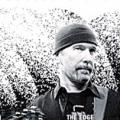The following is a guest post by Kevin Ian Common. If you are interested in guest posting, please contact me!
Growing up a guitar player was tough in the early years. I picked up a guitar a few years later than many of my friends, so when I tried out for bands, most of my friends in bands already had guitarists. This prompted me to think differently about playing guitar and how to play the guitar.
While most of these techniques are tried, true, and probably printed in many magazines before me, chances are you might have a small flash of inspiration. Maybe I will mention something you’ve never thought about. It’s also come to my attention–being in various bands in various cities for the past 10 years–that many bands have guitarists who simply strum power chords or basic open-position chords. Even the simplest variation can make a two-guitar texture sound full, or even a single guitar part sound distinctive.
Hopefully I will be able to continue this series which will include techniques, tricks, tips, and even ideas concerning effects pedals.
Let’s get on with it, shall we?
We’ll start with chords. Chords are the building blocks of any great song. Let’s take a simple progression:
AÂ Â Â Â DÂ Â Â Â EÂ Â Â Â A
You already have the building blocks of a great song. A typical guitarist would simply strum open position chords and call it a day. Let’s look at some alternative ways to play these three chords.
The following charts will be from left to right: E A D G B E
A:
X 0 2 2 2 5Â Â Â Â X 0 7 6 5 0Â Â Â Â X 0 11 9 10 0Â Â Â Â X 0 7 9 10 0Â Â Â Â X X X 9 10 9
D:
X 0 0 2 3 5Â Â Â Â X 0 0 7 7 5Â Â Â Â Â X X 0 11 10 XÂ Â Â Â X 0 7 7 10 XÂ Â Â Â X X 7 7 7 10
E:
0 2 2 4 5 XÂ Â Â Â X X 6 4 5 0Â Â Â Â X X 9 9 12 XÂ Â Â Â Â 0 7 9 9 0 0Â Â Â Â X X X 9 9 7
If you have two guitarists, try having one play the open chord positions and have another play one of these alternatives. You notice that the sound is fuller because different positions/octaves now have a voice in the overall texture. Also, if you are a single guitarist, 9 times out of 10 you have a bassist in the band, why not play an alternate voicing of chords and let the bass form the foundation? Even if the bassist is walking, you will create interesting harmonic movement while keeping everything simple.
Also, try these:
Another easy way to thicken a double-guitar texture is adding a capo to the proceedings. With a capo at the 2nd fret, A D E becomes G C D. At the 7th fret, A D E becomes D G A.
Try playing A D E octaves while letting the high B and E strings ring.
Have one guitarist isolate the third of each chord (A D E is C# F# G#) and play them in octaves. This is a popular technique in modern rock music, but that is because it’s very effective at achieving fuller sounds.
Better yet, for more linear harmonic motion, have a guitarist play E F# E over A D E ( the 5th of A, 3rd of D, Root of E) or C# D B over A D E (the 3rd of A, root of D, 5th of E) for even more interesting results.
Have one guitar distorted and one clean. Japanese rock band Luna Sea used this technique to great effect. You can find various videos on YouTube.
I hope you have found this interesting!
– Kevin Ian Common
The Common Men
www.myspace.com/thecommonmen


